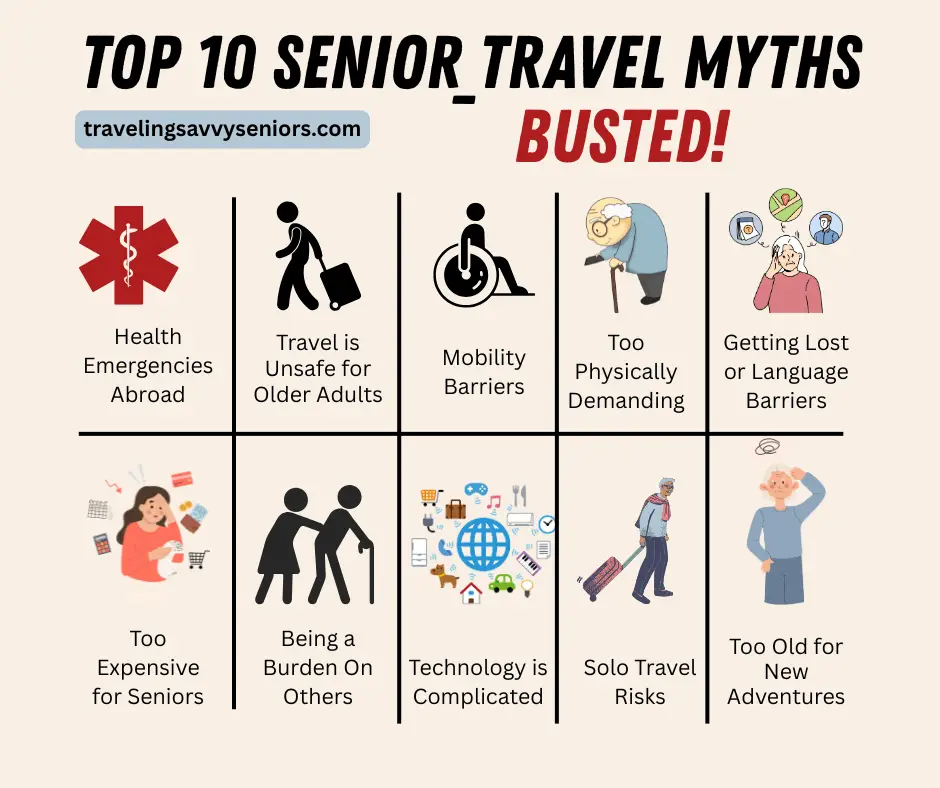Travel should be accessible to everyone, regardless of mobility challenges. Fortunately, many destinations worldwide have prioritized handicapped-accessible travel, offering barrier-free public transportation, wheelchair-friendly accommodations, and inclusive attractions.
If you’re looking for the most handicapped accessible travel destinations, this guide highlights the top 10 countries that provide seamless, stress-free travel for wheelchair users and those with limited mobility.
Discover the world, discover yourself
Why Accessibility Matters in Travel
Everyone deserves the freedom to explore the world without limitations. Accessible travel isn’t just about ramps and elevators—it’s about inclusive experiences where people of all abilities can enjoy their journey without barriers or extra challenges.
The best handicapped-accessible travel destinations provide:
- Step-free public transportation for easy navigation.
- Wheelchair-friendly hotels and accommodations with adapted amenities.
- Barrier-free attractions so visitors can fully experience historical sites, museums, and nature.
- Supportive infrastructure, including accessible restrooms, elevators, and tactile pathways for visually impaired travelers.
Now, let’s explore the best destinations for handicapped-accessible travel and what makes them so inclusive.
Most Handicapped Accessible Travel Destinations
Here are the top 10 countries that provide exceptional accessibility for travelers with disabilities.
1. Sweden
If you’re looking for one of the most handicapped-accessible travel destinations, Sweden should be at the top of your list. The country has some of the strictest accessibility laws in the world, ensuring that public spaces, transportation, and attractions are designed for seamless, stress-free travel.
Getting around Sweden is easy, thanks to fully wheelchair-friendly public transport. Buses, trains, and even ferries are designed with accessibility in mind, making it simple to explore the country. Sweden also has an Accessibility Database with over 8,000 barrier-free locations, so you can plan your trip with confidence.
While in Sweden, don’t miss the Moderna Museet in Stockholm, where you can enjoy incredible art with step-free access and guided tours. If you want to experience Sweden’s historic charm, Gamla Stan (Old Town) offers accessible routes, so you won’t have to worry about navigating cobblestone streets.
To make your trip even easier, check out Sweden’s SL website for up-to-date accessibility information on public transport.
2. Spain
Spain is an amazing destination for travelers with disabilities. Whether you want to explore vibrant cities, soak up the sun on accessible beaches, or experience rich culture, Spain has you covered.
Public transportation is step-free and wheelchair-friendly, with low-floor buses, adapted metro stations, and accessible taxis in major cities like Barcelona, Madrid, and Valencia. Even Spain’s beautiful beaches are designed with accessibility in mind, featuring boardwalks, ramps, and free beach wheelchair rentals.
If you’re visiting Barcelona, the Sagrada Familia is a must-see. This breathtaking basilica has ramps, elevators, and special guided tours for visitors with mobility challenges. Another great spot is Park Güell, where wheelchair-friendly paths allow you to explore Gaudí’s famous designs with ease.
To plan your trip effortlessly, check out Barcelona’s Accessible Tourism Office, which provides detailed guides on barrier-free attractions and transportation.
3. Japan
If you love modern cities, rich history, and cutting-edge accessibility, Japan is a fantastic destination. The country has made huge strides in accessible tourism, making it easier than ever for travelers with disabilities to explore its vibrant cities.
Japan’s public transportation is one of the most accessible in the world. Trains, buses, and metro stations offer step-free access, priority seating, and audio guidance. If you’re visually impaired, you’ll find tactile paving throughout the cities, helping you navigate safely.
Tokyo is packed with accessible attractions. At Sensō-ji Temple, you can experience Japan’s cultural heritage with barrier-free walkways and elevator access. The Tokyo National Museum is another great stop, offering wheelchair-friendly paths and audio guides to enhance your visit.
For the best experience, stick to major cities like Tokyo, Kyoto, and Osaka, where accessible transport and facilities are well-developed.
4. United States
If you’re looking for one of the easiest places to travel with a disability, the United States is a great option. Thanks to the Americans with Disabilities Act (ADA), major cities across the country offer fully accessible public transportation, hotels, and attractions.
Every major airport, bus system, and metro service is legally required to be wheelchair-friendly, and many national parks offer adaptive trails, accessible viewing platforms, and wheelchair rentals.
If you’re visiting the U.S., be sure to check out the Seattle Art Museum, which was designed with step-free access and accessible exhibits in mind. Another great choice is the Denver Botanic Gardens, where you can explore beautiful landscapes along wheelchair-friendly paths.
For more details on accessible travel in the U.S., visit ADA.gov, where you’ll find comprehensive guides and resources.

5. France
France has made huge strides in accessible travel, making it one of the best destinations for travelers with disabilities. If you’ve always dreamed of visiting Paris, you’ll be happy to know that many of the city’s top attractions have been updated with ramps, elevators, and step-free access.
One of the highlights of any Paris trip is the Louvre Museum. You can explore its world-famous art collections without worrying about accessibility, thanks to wheelchair-friendly galleries, accessible elevators, and guided tours designed for travelers with mobility challenges. The Eiffel Tower also provides elevator access to the first two levels, so you can enjoy breathtaking views of the city without climbing stairs.
Getting around Paris is easier than ever, with wheelchair-accessible buses and select metro stations offering step-free boarding. Just be sure to plan ahead, as not all metro stations are fully accessible.
To make your trip even smoother, book attraction tickets in advance to skip the long lines and secure accessibility accommodations.
6. Canada
Canada is one of the most handicapped-accessible travel destinations, offering barrier-free cities, inclusive public transport, and accessible natural attractions. Whether you want to explore a bustling city or take in breathtaking landscapes, Canada makes it possible for travelers of all mobility levels.
If you’re heading to Vancouver, don’t miss Stanley Park. This iconic destination features smooth, wheelchair-friendly walking paths and scenic viewpoints. Over in Toronto, you can visit the CN Tower, which has elevator access to the observation deck, so you can take in stunning city views without any barriers.
Public transit in cities like Vancouver, Toronto, and Montreal includes accessible buses, subways, and ferries, making it easy to get around. Canada also has strong accessibility laws, ensuring that hotels, attractions, and public spaces follow strict accessibility guidelines.
For city-specific accessibility details, check out Canada’s Accessible Travel Guide, which provides up-to-date resources for travelers with disabilities.
7. Germany
Germany is a fantastic destination for travelers with disabilities, thanks to its strong accessibility laws, well-connected transportation system, and pedestrian-friendly cities.
Getting around is a breeze, as most trains and buses feature step-free boarding, priority seating, and audio announcements. Hotels and major attractions also comply with Germany’s national accessibility standards, so you can explore the country comfortably.
Berlin is one of the most accessible cities in Germany, offering barrier-free attractions like the Brandenburg Gate, step-free museums, and smooth sidewalks. If you love history, don’t miss Neuschwanstein Castle, which offers adapted tours and shuttle services for visitors with mobility challenges.
For real-time accessibility updates, download Germany’s Accessible Travel App, which provides essential travel tips and information for disabled travelers.
8. Australia – Inclusive Beaches, Parks & Cities
Australia is known for its barrier-free cities, accessible public transportation, and inclusive outdoor attractions. Whether you want to explore a bustling city or relax on an accessible beach, Australia makes it possible.
In Sydney, the famous Opera House is fully accessible, with ramps, elevators, and audio guides for a seamless experience. If you’re looking for scenic coastal views, the Great Ocean Road has wheelchair-friendly lookout points, so you can take in the breathtaking landscapes without any obstacles.
Australia’s beaches are some of the most accessible in the world, with many offering ramps, boardwalks, and free beach wheelchair rentals. National parks have also been updated with accessible trails and adaptive hiking options, making it easier to explore the great outdoors.
For a hassle-free experience, use Australia’s Accessible Tourism Directory to find hotels, attractions, and transportation services designed for travelers with disabilities.

9. Brazil – South America’s Most Accessible Destination
If you’re looking for an accessible destination in South America, Brazil is a top choice. The country has been making significant progress in creating wheelchair-friendly cities, attractions, and transportation options.
Rio de Janeiro, in particular, has improved its accessibility with ramps, and tactile sidewalks, and adapted public transport. One of the highlights is Copacabana Beach, where visitors can enjoy accessible boardwalks and beach wheelchairs. Another must-visit attraction is the Christ the Redeemer statue, which offers accessible transportation options to reach the iconic landmark.
While accessibility standards are still improving, hiring a local accessible tour guide can make navigating older areas much easier. Planning ahead will help ensure a smooth, enjoyable trip.
10. Mexico – A Growing Leader in Accessibility
Mexico is becoming one of the most handicapped accessible travel destinations, thanks to major investments in inclusive tourism infrastructure. Cities like Mexico City and Cancun have made great strides in creating barrier-free attractions and services.
If you’re a history lover, the National Museum of Anthropology in Mexico City offers step-free entry, wheelchair access, and guided tours for visitors with disabilities. For those seeking a beach getaway, Cancun’s beaches feature accessible boardwalks and adaptive beach wheelchairs, making it easier to enjoy the stunning coastline.
Accessibility varies by region, so it’s best to research transportation options in advance to ensure you find the best routes and services for your trip.
Making Accessible Travel Enjoyable and Affordable
Traveling with a disability or mobility challenge doesn’t have to be expensive or complicated. With the right planning, you can explore the world comfortably, safely, and affordably.
Budget-Friendly Travel Tips
You don’t need a big budget to have an amazing experience. Traveling during the off-season can help you save on flights and hotels, while senior and disability discounts are available at many attractions. Consider staying in accommodations with a kitchen to prepare some of your own meals and cut down on dining costs. Public transportation is often a much more affordable way to get around than taxis or rental cars. Finally, take advantage of free activities like parks, museums with free admission days, and self-guided walking tours.
Staying Safe While Traveling
Safety should always be a top priority, especially when traveling with a disability. Planning ahead is key, some safety tips to follow are—research accessible routes, accommodations, and transportation before you go. If possible, travel with a companion who can assist if needed. Pack enough of your essential medications and store them safely. Investing in travel insurance can give you peace of mind in case of emergencies, lost luggage, or trip cancellations. Always stay aware of your surroundings and look out for potential hazards, such as uneven sidewalks or crowded areas.
Alternative Travel Options for a Hassle-Free Experience
If navigating an unfamiliar destination feels overwhelming, there are alternative travel options that offer a more accessible and stress-free experience.
- Cruises provide fully accessible cabins, facilities, and shore excursions designed for travelers with disabilities.
- Guided tours with companies specializing in accessible travel ensure that every aspect of your trip is planned with your needs in mind.
- Resorts built with accessibility in mind often feature ramps, elevators, and wheelchair-friendly pools, allowing you to enjoy a relaxing vacation without limitations.
Final Thoughts: Travel Without Limits
With so many handicapped-accessible travel destinations to choose from, exploring the world is more possible than ever. Whether you’re visiting barrier-free cities, accessible national parks, or inclusive beach resorts, the right planning can ensure a smooth, enjoyable, and stress-free journey.
No matter where your next adventure takes you, remember: travel should be for everyone. With accessible options expanding worldwide, you can experience new cultures, meet amazing people, and create lifelong memories—without limitations.
Where will your next accessible journey take you?
Turning Dreams into Destinations





